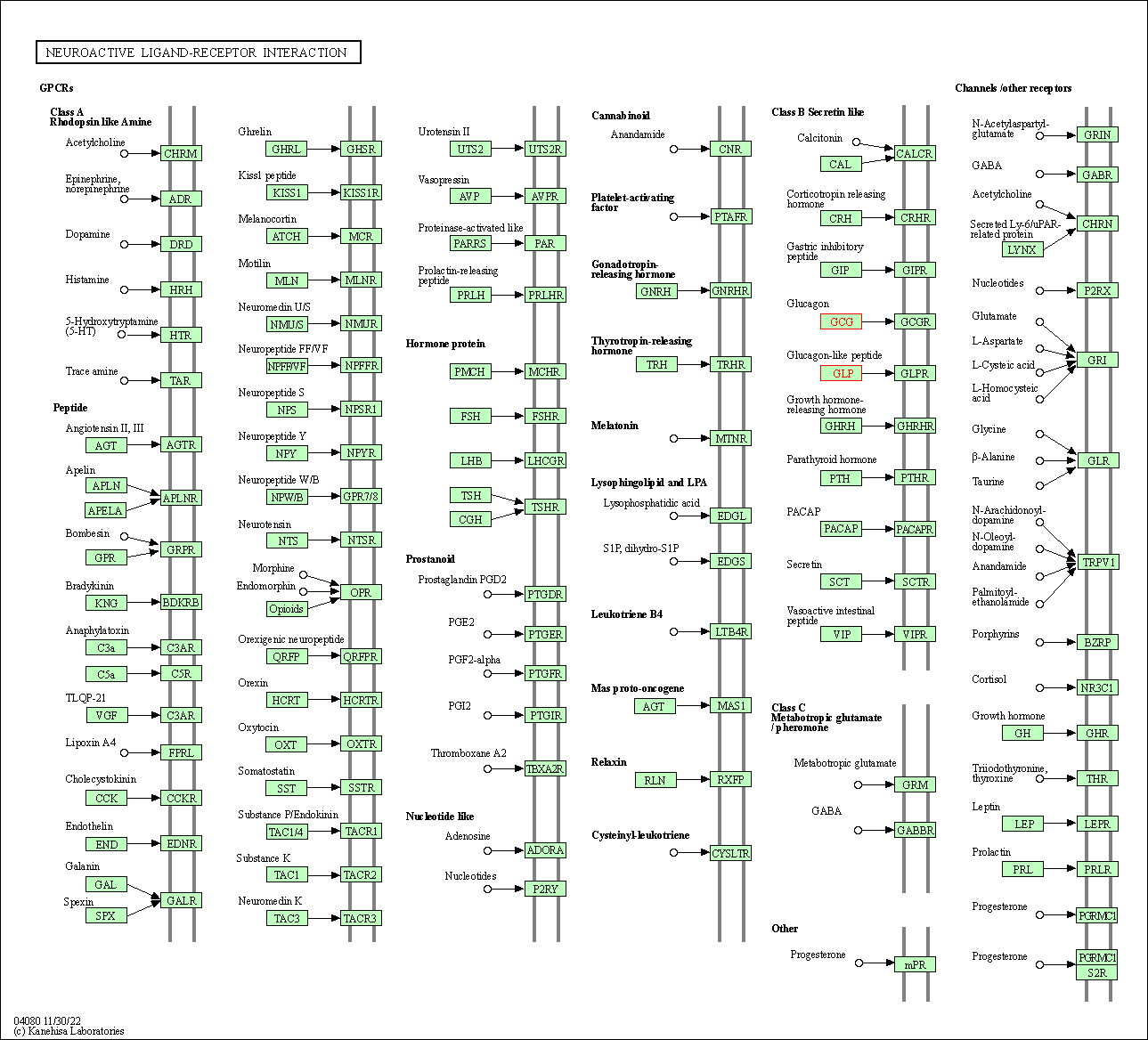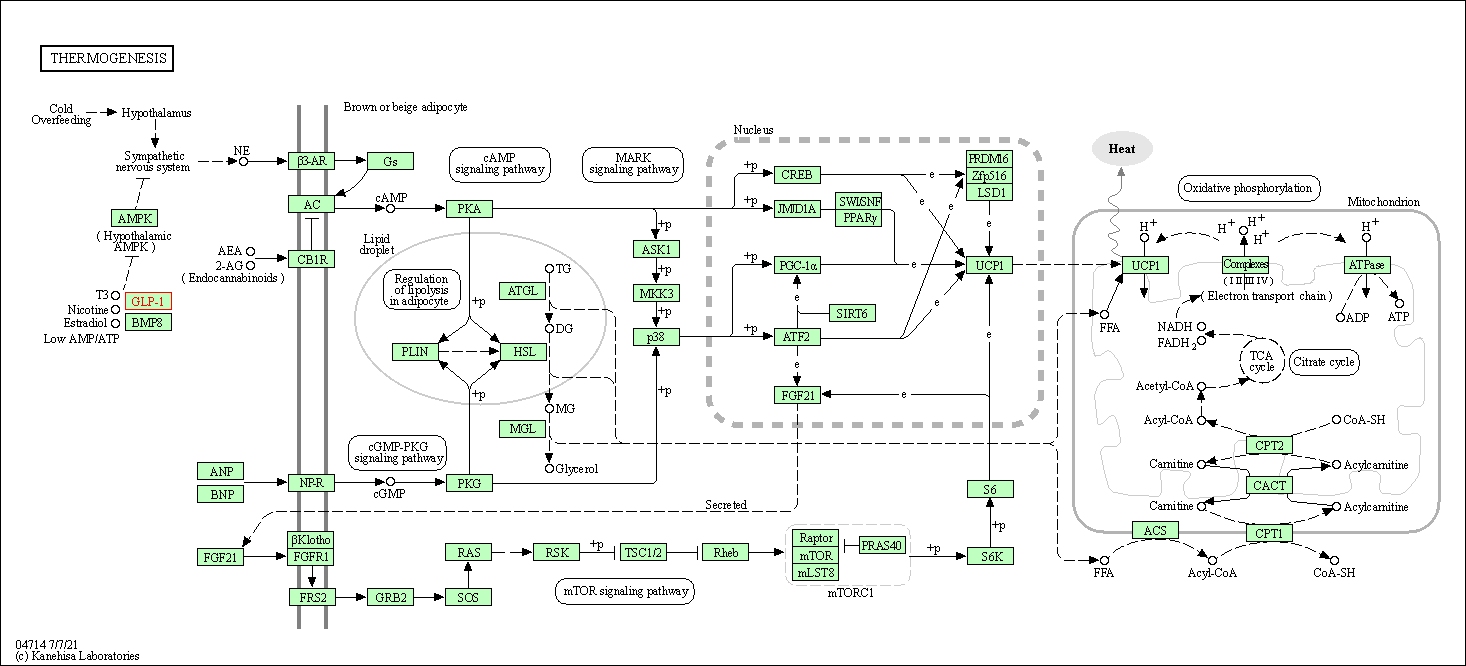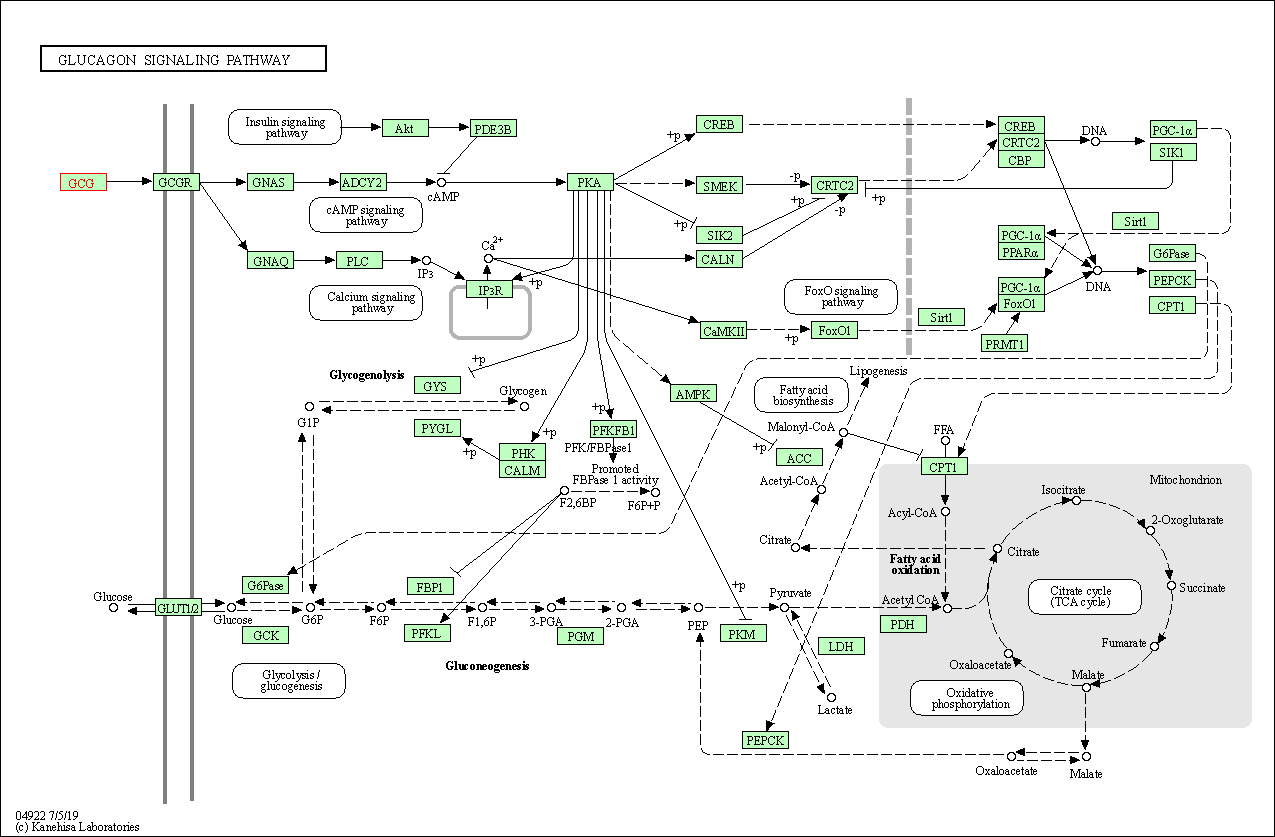Target Information
| Target General Information | Top | |||||
|---|---|---|---|---|---|---|
| Target ID |
T09694
(Former ID: TTDC00205)
|
|||||
| Target Name |
Glucagon-like peptide 1 (GLP-1:7-37)
|
|||||
| Synonyms |
Glucagon-like peptide-1(7-36)-amide; GLP-1 (92-128); GLP; GCG
Click to Show/Hide
|
|||||
| Gene Name |
GCG
|
|||||
| Target Type |
Literature-reported target
|
[1] | ||||
| Function |
Glicentin may modulate gastric acid secretion and the gastro-pyloro-duodenal activity. May play an important role in intestinal mucosal growth in the early period of life.
Click to Show/Hide
|
|||||
| BioChemical Class |
Glucagon
|
|||||
| UniProt ID | ||||||
| Sequence |
HDEFERHAEGTFTSDVSSYLEGQAAKEFIAWLVKGRG
Click to Show/Hide
|
|||||
| Different Human System Profiles of Target | Top |
|---|---|
|
Human Similarity Proteins
of target is determined by comparing the sequence similarity of all human proteins with the target based on BLAST. The similarity proteins for a target are defined as the proteins with E-value < 0.005 and outside the protein families of the target.
A target that has fewer human similarity proteins outside its family is commonly regarded to possess a greater capacity to avoid undesired interactions and thus increase the possibility of finding successful drugs
(Brief Bioinform, 21: 649-662, 2020).
Human Pathway Affiliation
of target is determined by the life-essential pathways provided on KEGG database. The target-affiliated pathways were defined based on the following two criteria (a) the pathways of the studied target should be life-essential for both healthy individuals and patients, and (b) the studied target should occupy an upstream position in the pathways and therefore had the ability to regulate biological function.
Targets involved in a fewer pathways have greater likelihood to be successfully developed, while those associated with more human pathways increase the chance of undesirable interferences with other human processes
(Pharmacol Rev, 58: 259-279, 2006).
Human Similarity Proteins
Human Pathway Affiliation
|
|
| Protein Name | Pfam ID | Percentage of Identity (%) | E value |
|---|---|---|---|
| Glucagon (GCG) | 100.000 (31/31) | 2.50E-15 |
| KEGG Pathway | Pathway ID | Affiliated Target | Pathway Map |
|---|---|---|---|
| cAMP signaling pathway | hsa04024 | Affiliated Target |

|
| Class: Environmental Information Processing => Signal transduction | Pathway Hierarchy | ||
| Neuroactive ligand-receptor interaction | hsa04080 | Affiliated Target |

|
| Class: Environmental Information Processing => Signaling molecules and interaction | Pathway Hierarchy | ||
| Thermogenesis | hsa04714 | Affiliated Target |

|
| Class: Organismal Systems => Environmental adaptation | Pathway Hierarchy | ||
| Insulin secretion | hsa04911 | Affiliated Target |

|
| Class: Organismal Systems => Endocrine system | Pathway Hierarchy | ||
| Glucagon signaling pathway | hsa04922 | Affiliated Target |

|
| Class: Organismal Systems => Endocrine system | Pathway Hierarchy | ||
| Target Affiliated Biological Pathways | Top | |||||
|---|---|---|---|---|---|---|
| KEGG Pathway | [+] 2 KEGG Pathways | + | ||||
| 1 | Insulin secretion | |||||
| 2 | Glucagon signaling pathway | |||||
| Reactome | [+] 5 Reactome Pathways | + | ||||
| 1 | Glucagon signaling in metabolic regulation | |||||
| 2 | Glucagon-like Peptide-1 (GLP1) regulates insulin secretion | |||||
| 3 | G alpha (q) signalling events | |||||
| 4 | G alpha (s) signalling events | |||||
| 5 | Glucagon-type ligand receptors | |||||
| WikiPathways | [+] 6 WikiPathways | + | ||||
| 1 | Incretin Synthesis, Secretion, and Inactivation | |||||
| 2 | Gastrin-CREB signalling pathway via PKC and MAPK | |||||
| 3 | Synthesis, Secretion, and Deacylation of Ghrelin | |||||
| 4 | Integration of energy metabolism | |||||
| 5 | GPCR ligand binding | |||||
| 6 | GPCR downstream signaling | |||||
| Target-Related Models and Studies | Top | |||||
|---|---|---|---|---|---|---|
| Target Validation | ||||||
| References | Top | |||||
|---|---|---|---|---|---|---|
| REF 1 | Promising new approaches to the management of obesity. Drugs. 2000 Jul;60(1):1-9. | |||||
If You Find Any Error in Data or Bug in Web Service, Please Kindly Report It to Dr. Zhou and Dr. Zhang.

